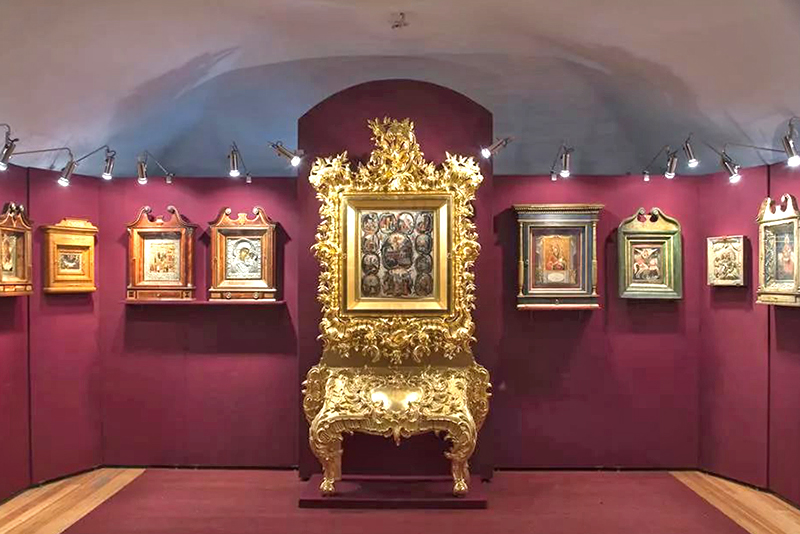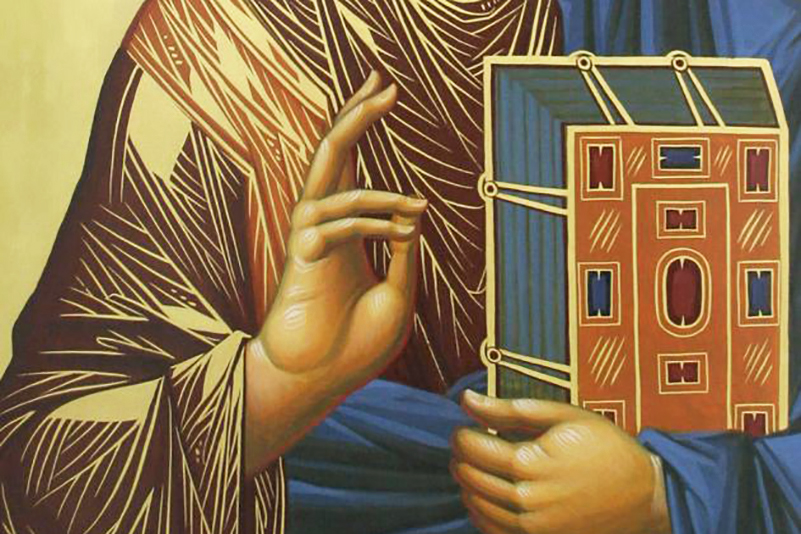
We often see hand-painted icons being placed in icon cases. A typical icon-case looks like a glazed box, designed to ensure the best conditions for preservation of an icon, both in churches and homes. An icon case allows to create a microclimate making an icon less susceptible to external influences.
The prototype of the icon-case (as well as other religious items used for storage) is the Ark of the Covenant. The main purpose of such items is protecting a particular shrine.
Ancient Icon Cases
The design of ancient icon cases clearly reflects their protective function. In the days when icons were rare, the attitude towards them was especially reverent and respectful. An icon was both a sacred relic and a precious object that had to be well-protected. For this reason, icon cases often had shutters (volets). Typically an icon would be opened and carried out only on major holidays.


Due to geographical factors, woodcarving has become widespread in the north of Russia, where icons were often created in the form of carved sculptural images. Figures of saints were carved from wood and placed in a case, shaped like an icon, a church or a chapel.
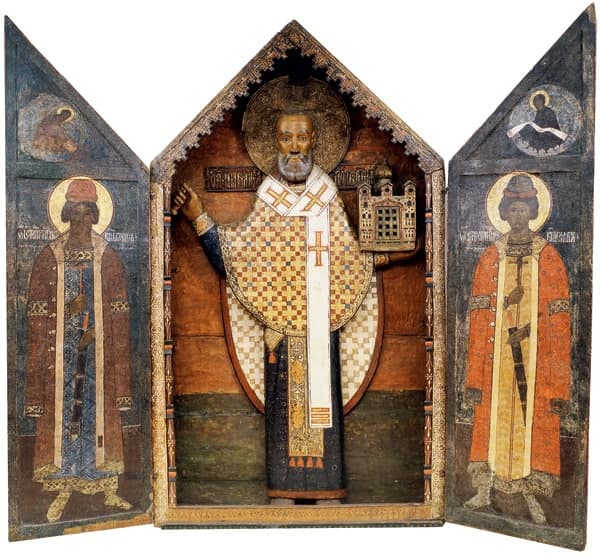
At the end of the 17th century, Flemish carving became widespread in Russian art. Spreading from Flanders, through Germany and to Eastern Europe, it was brought to Russia by Belarusian master carvers, who were often hired to decorate churches during the time of Patriarch Nikon. A distinctive feature of this technique is the relief and ornamental motifs in the Baroque style. Due to the high quality of the carving, such ornamental patterns seemed to be fully cast in gold.

Vetka, a Spiritual Centre of the Old Believers And a Treasure Trove of Ancient Russian Culture
Gilded wood carving developed especially rapidly after the end of the 17th century on the territory of modern Gomel, Bryansk and Chernigov districts. In the 1680s, after the adoption of the reforms resulting in a split in the Russian Orthodox Church (the Raskol), Old Believers began to flee from Russia, where they were severely persecuted.
It is during that time that the town of Vetka on the territory of modern Belarus became a fortress for the Old Believers, which it remained for a long time. Being located on the territory of the Grand Duchy of Lithuania, Vetka was beyond the reach of the Russian troops, which helped it become a major spiritual centre of the Old Believers. Several monasteries and dozens of sketes were founded here, attracting pilgrims from all over Russia. The Old Believers preserved the traditions of Ancient Russia and formed their own cultural phenomenon in arts and crafts, as well as in everyday life. This happened due to the interaction of various traditions: Belarusian Orthodox, Catholic “gentry”, Cossacks and Old Believers. The synthesis of the arts gave birth to a genuine original style of the entire region, reflected in icon painting, embossing, gold embroidery, pearl and bead embroidery, gilded icon-case carvings and household carved decor.
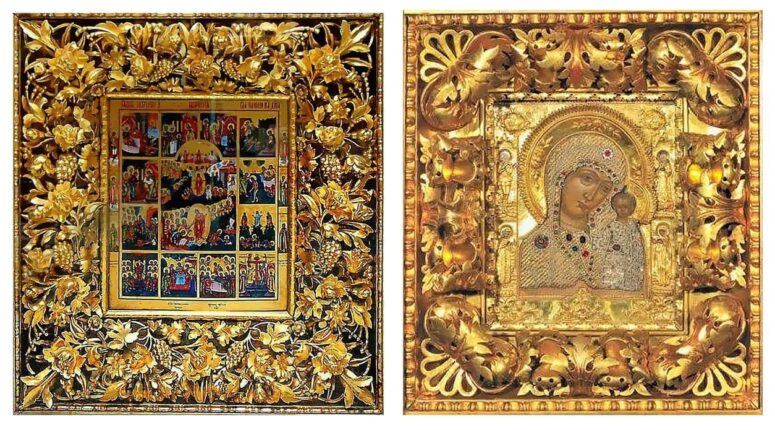
Vetka Gilded Carving
The surviving carved icon cases from Vetka were created in the 18th-19th centuries, following a technique derived from the Flemish Baroque carving. Belarusians enriched this technique with their own methods and approaches, turning wood into a through pattern of intricate weaves of plant and ornamental motifs.
These patterns were made up of individual details – leaves, berries and vines, carved from wood (most often linden). Then they were covered with several layers of gesso and gilded with gold leaf. Such ornate sculptured wooden decorations created an image of the Garden of Eden. Such icon-case carvings complemented the original tradition of the Vetka icon-painting school and adorned the iconostases of Old Believer churches and monasteries, as well as wealthy houses. One of the unique examples of this beauty is the carved gilded four-tiered iconostasis of St Lawrence Monastery, founded in 1735, a major centre of the religious and economic life of the Gomel Old Believers until its closure in 1844.
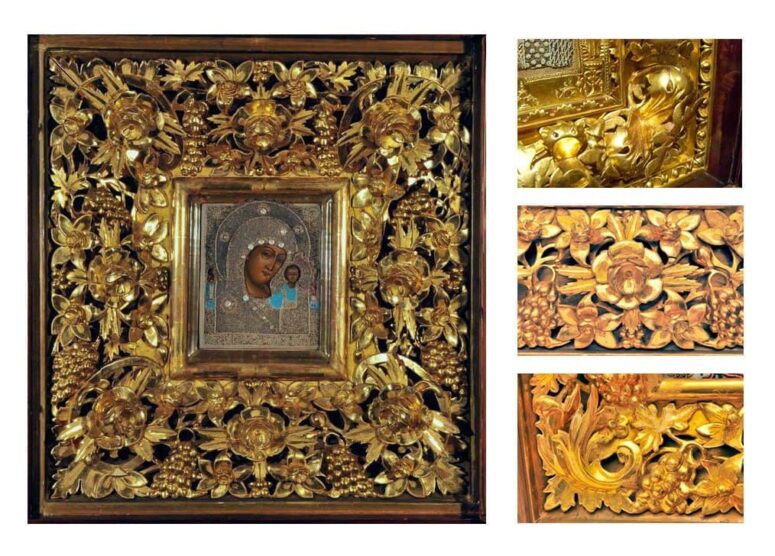
Gold has many symbolic meanings in Christian art. First of all, it signifies the Divine uncreated light and the radiance emanating from the kingdom of God. This is why we often see a gilded background on icons. An icon can be compared to a window into the kingdom of heaven. Besides serving as frames, most icon cases also have small vaults, “descending” towards the image. Together with the ark (a recess carved on the icon board before writing the icon) this creates an impression of a “staircase” leading the beholder to the depicted heaven.
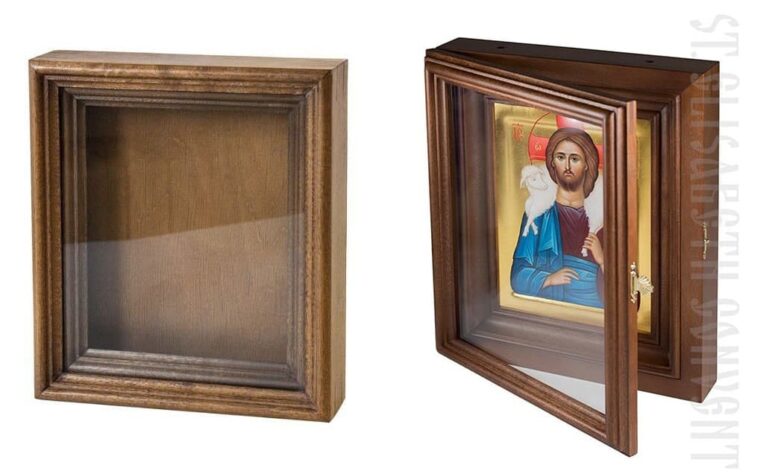
The plant motifs and special gilding and carving techniques from Vetka greatly enhance this symbolism of heaven. It is truly a unique heritage not only of the Old Believers, but also of Belarusian culture.

